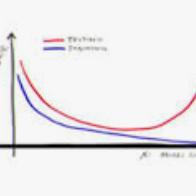Existing face restoration researches typically relies on either the degradation prior or explicit guidance labels for training, which often results in limited generalization ability over real-world images with heterogeneous degradations and rich background contents. In this paper, we investigate the more challenging and practical "dual-blind" version of the problem by lifting the requirements on both types of prior, termed as "Face Renovation"(FR). Specifically, we formulated FR as a semantic-guided generation problem and tackle it with a collaborative suppression and replenishment (CSR) approach. This leads to HiFaceGAN, a multi-stage framework containing several nested CSR units that progressively replenish facial details based on the hierarchical semantic guidance extracted from the front-end content-adaptive suppression modules. Extensive experiments on both synthetic and real face images have verified the superior performance of HiFaceGAN over a wide range of challenging restoration subtasks, demonstrating its versatility, robustness and generalization ability towards real-world face processing applications.
翻译:现有的面部恢复研究通常依赖于先前的退化或明确的培训指导标签,这往往导致对现实世界中具有不同降解和丰富背景内容的图像进行有限的概括化能力。在本文件中,我们调查了更具有挑战性和实用性的“双盲”问题版本,通过取消对两种先前类型的要求,即所谓的“脸面更新”(FR)的要求。具体地说,我们将FR设计成一个语义引导的一代问题,并以合作抑制和补充(CSR)方法加以解决。这导致HiFaceGAN,这是一个多阶段框架,包含几个嵌套式的CSR单元,根据从前端内容适应抑制模块提取的等级语义指导逐步补充面部细节。关于合成图像和真实图像的广泛实验证实了HiFaceGAN在具有挑战性的恢复子任务方面的优异性表现,显示了其多功能性、稳健性和向真实世界面面处理应用的概括能力。




